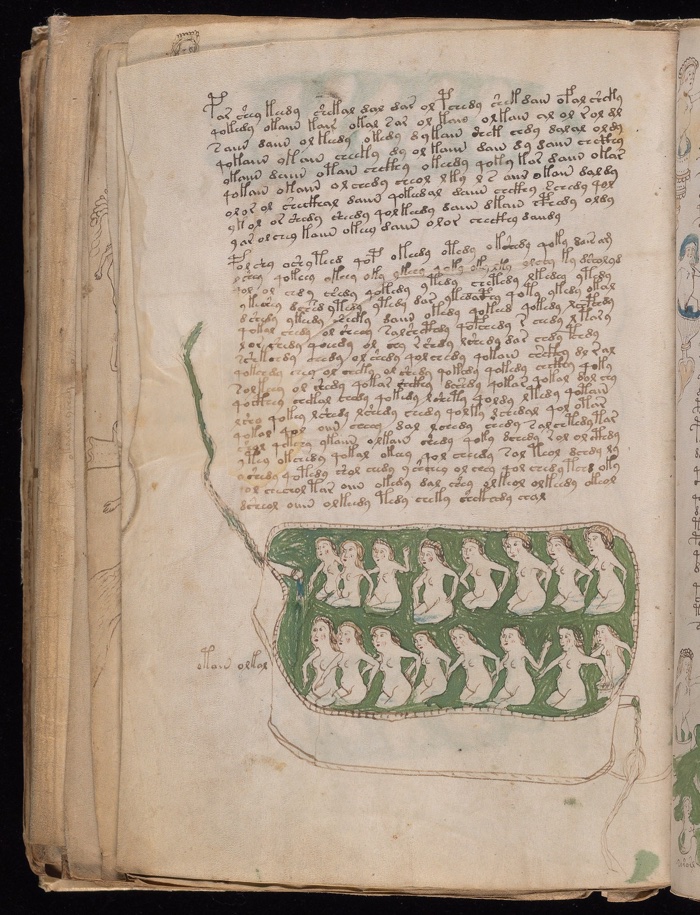
The question to be asked is: Do the symbols in the Voynich manuscript, which are candidates for letters, appear to group together repeatedly to form possible words or grammatical elements such as verb tenses or noun plurals in some natural language and in a text written from left to right or are the symbols simply distributed at random? Their status as parts of meaningful segments of language, that is, lexical or grammatical items, depends on where they fall relative to one another. To be sure, even if the symbols are mainly letters, it does not follow that they combine to form words producing plain as opposed to enciphered text.


However, it may turn out that some of these symbols may double as letters and digits and a small number may even stand for syllables. Therefore this analysis will refer to all members of the symbol set as letters. Thus the concentration on the former as the more promising approach, with many of the symbols being similar to, or identical with the letters of the Latin alphabet, and in some cases not greatly dissimilar to letter shapes of other familiar alphabets, such as Cyrillic. While the latter was (and is) a possibility it has always seemed intuitively unlikely. The first challenge was to determine whether the symbols unique to the manuscript made up an alphabetic system (perhaps incorporating digits) or whether they were simply decorative flourishes expressing some aesthetic purpose. On a few occasions they do employ a spacing technique which has in one instance proved highly useful. The manuscript presenters do not use quotation marks, capitalization, or color coding to clearly distinguish between the textual meanings and the form citations. There are differences in the manuscript between textual meaning of words from the citational forms representing words. The above analysis leads to a discussion of the practices of the presenters in citing language forms. Obviously, as the analysis presented goes beyond a single language on many occasions, the resulting texts have a nightmare quality!

In doing their work the presenters deal with the highly complex relationship of sounds with their written representations as letters, and in some cases, letter complexes, lexicon, word order, and other likely language phenomena which so far has defied analysis. They appear to be comparing and contrasting language forms used by the (gotar) and the (otar) which has been rendered respectively as “Goths” and “Jutes” without intending identification with historical peoples, although some kind of association may finally emerge. It is clear, especially reading folios 76-Recto and 106-Verso, that the person or persons associated with these (hereafter they will be referred to as the presenters) are describing aspects of two or more languages, almost certainly of the north Germanic sub-group. This work suggests that the manuscript is written in at least two languages, comparing the Jutish to the Gothic language. One of the difficulties faced by others in the past in attempting to translate this manuscript has been the mistaken assumption that the Voynich manuscript contains a single language. This research examines the Voynich manuscript through a German philological lens, using linguistic analysis to identify the languages of the manuscript which seem to be Germanic languages, specifically Gothic, Jutish, an early form of Danish, and perhaps shows Slavonic influences. Research: Application of the interpretation of the character set to the original text Info: Links to further information about the manuscript Staff: Biographies of the active members of this site Mail: Communication with the staff

It is also our desire that this research will be continued by scholars more qualified in German philological studies.Ĭodex : Description of the manuscript Method: Explanation of the research approach Cypher: Description of the character set, transliteration, digraghs, possible word translations. The research on this website will offer a possible interpretation of the Voynich character set to support this claim. This website is dedicated to the proposition that the Voynich manuscript is written in ancient Germanic languages.


 0 kommentar(er)
0 kommentar(er)
